
Your product title gets 2 seconds. Your description gets maybe 10 more.
That’s your window to convert a scrolling shopper into a buyer. Miss it, and they’re gone, clicking through to your competitor who figured out how to write copy that actually sells.
Here’s what most skincare sellers get wrong: they treat titles and descriptions like ingredient lists. Boring. Technical. Forgettable. But the brands crushing it? They know these aren’t just skincare labels. They’re mini sales pitches wrapped in search-friendly packaging.
Whether you’re launching on Amazon, Shopify, or your own site, your words need to work as hard as your formulas. This guide breaks down exactly how to write titles and descriptions that get found in search, grab attention on the page, and turn browsers into buyers.
Jump right in: A Guide to Skincare Titles and Descriptions
- Platform Requirements: Character Limits and Rules for 2025
- Product Title Strategy: The Formula That Works
- Writing Descriptions That Sell: Benefits Over Ingredients
- Brand Voice: Make It Sound Like You
- Sensory Language That Creates Connection
- SEO Without Sounding Like a Robot
- Usage Instructions That Build Trust
- Call-to-Action That Closes the Deal
- Ready-to-Use Templates (Copy and Customize)
- Mistakes That Kill Conversions
- Legal Compliance: What You Can and Can’t Say
- Summary & Sources
Platform Requirements: Character Limits and Rules for 2025
Each platform has different rules. Ignore them, and your listing gets suppressed or cut off mid-sentence.
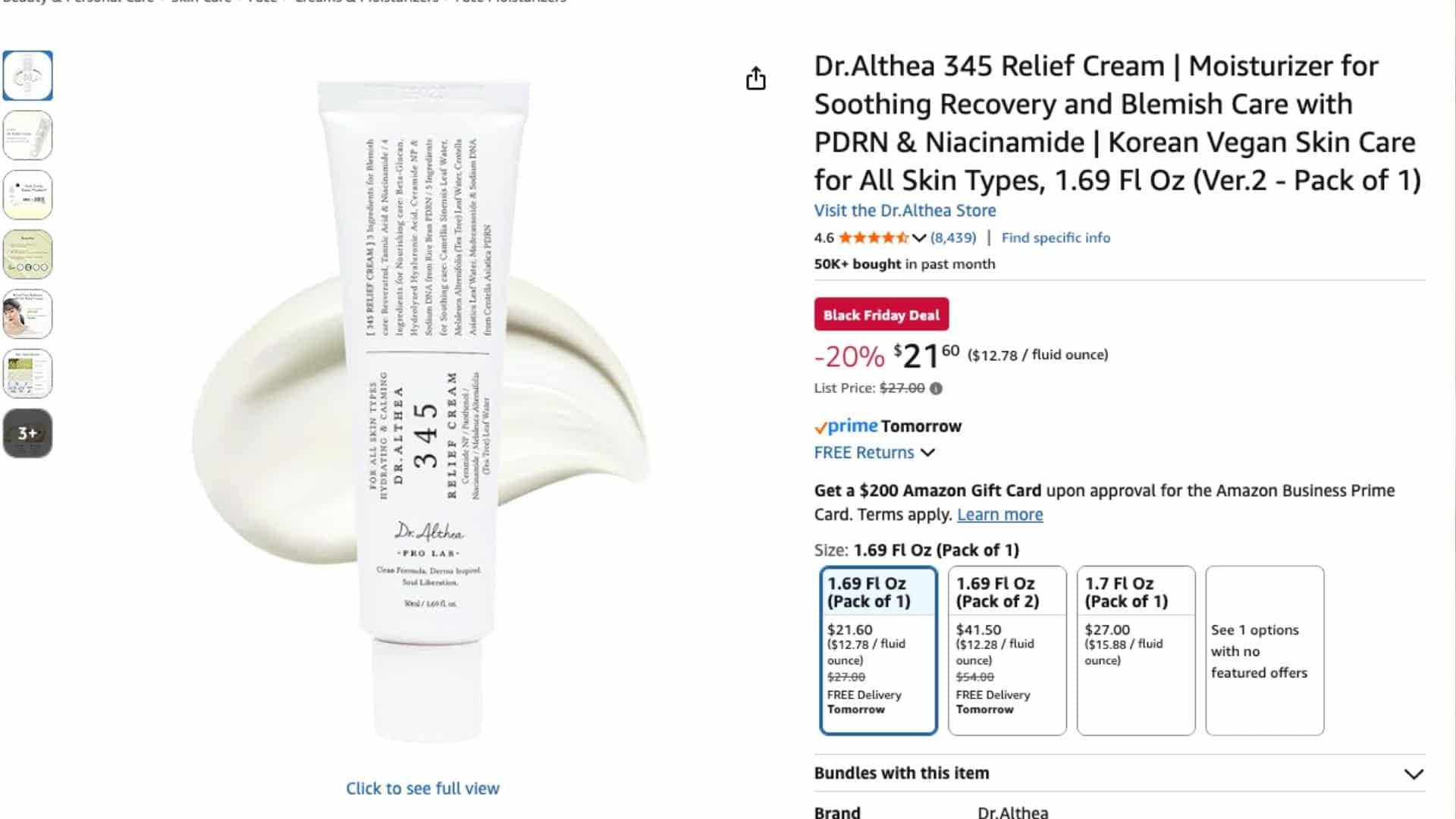
Amazon’s New 2025 Title Rules (Effective January 21, 2025)
Amazon just tightened things up. Here’s what changed:
Character Limits:
- Maximum 200 characters (including spaces)
- Mobile displays only show ~45-90 characters
- Sweet spot: 80-100 characters for best visibility
Special Character Restrictions:
- Banned: !, $, ?, _, {, }, ^, ¬, ¦
- Only allowed if part of your registered brand name
- Pipes (|) and dashes (-) still work for separating info
- No decorative symbols or excessive punctuation
Word Repetition Rules:
- Same word can’t appear more than twice
- Exception: articles (a, an, the), prepositions (in, on, with), conjunctions (and, or, but)
- Plurals count as repeats (serum/serums = same word)
- Brand names get separate counting from product descriptions
Formatting Requirements:
- Title case (capitalize first letter of each word)
- No ALL CAPS anywhere
- Don’t capitalize short prepositions (with, in, on)
What Happens If You Don’t Comply: Amazon gives brand owners 14 days to fix flagged titles. After that? They auto-update them using AI. Your listing stays live, but you lose control of your messaging. Not ideal.
Shopify Title Best Practices
Shopify gives you more freedom, but that doesn’t mean you should write a novel.
Optimal Length: 20-70 characters
- Too short (under 20): Not enough detail for search or customers
- Too long (over 70): Looks spammy, gets cut off in thumbnails
SEO Title Field: Under 70 characters Meta Description: 150-155 characters
No hard limits exist, but longer titles hurt your conversion rate. Shoppers scan fast. Give them the info upfront.
Walmart Marketplace Guidelines
Display Behavior:
- Shows ~50 characters before cutting off on mobile/desktop
- Maximum varies by category
Formatting:
- Title case required
- Can’t reuse exact wording from other sites (they check)
- No time-sensitive words like “new” or “limited time”
- No competitor comparisons or personal opinions
eBay Rules
Hard Limit: 80 characters max Performance Data: Titles over 60 characters sell 1.5x more often
Short platform, but every character counts. Front-load your keywords.
Platform Comparison Table
|
Platform |
Character Limit |
Optimal Length |
Special Notes |
|
Amazon |
200 max |
80-100 |
New 2025 rules, word repetition limits |
|
Shopify |
No hard limit |
20-70 |
Focus on clarity over length |
|
Walmart |
Varies by category |
50-60 |
Unique copy required |
|
eBay |
80 max |
60+ |
Longer titles convert better |
|
Etsy |
140 max |
100-140 |
Use all available space |
Product Title Strategy: The Formula That Works
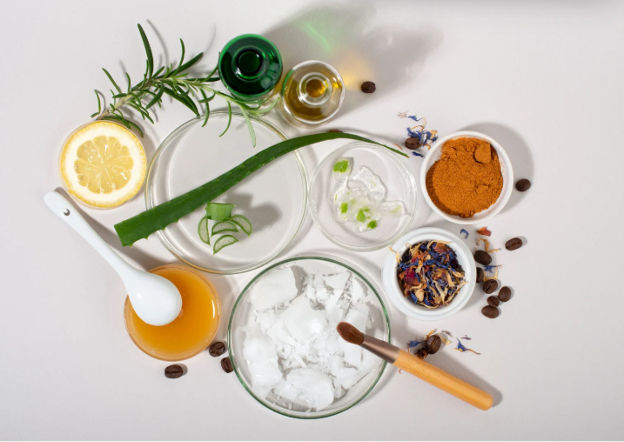
Stop guessing. Here’s the proven structure that sells across platforms:
[Product Type] + [Key Ingredient/Benefit] + [Skin Type/Concern] + [Format/Size]
Real Examples That Work
Good:
- “Hyaluronic Acid Serum for Dehydrated Skin – 30ml”
- “Gentle Vitamin C Brightening Cream for Sensitive Skin”
- “Oil-Free Acne Treatment Gel with Salicylic Acid – 2oz”
Better:
- “Hydrating Face Serum with 2% Hyaluronic Acid for Dry Skin”
- “Anti-Aging Retinol Night Cream 0.5% for Fine Lines”
- “Soothing Rosacea Moisturizer with Niacinamide – Fragrance Free”
See the difference? Specifics sell. The second set tells you exactly what percentage, exact concern, and extra details that matter.
What to Include (Priority Order)
- Product type (serum, cream, cleanser, toner, oil)
- Star ingredient with percentage if relevant (3% niacinamide, 10% vitamin C)
- Primary benefit (brightening, hydrating, anti-aging, clarifying)
- Target skin type (dry, oily, sensitive, combination, mature)
- Key attributes (vegan, fragrance-free, oil-free, non-comedogenic)
- Size/format (if space allows)
Front-Load Your Keywords
The first 40-50 characters matter most. Search algorithms prioritize them. Mobile screens show them first. Humans scan them fastest.
Weak Opening: “Our Amazing Revolutionary Product for Beautiful Skin: A Vitamin C Serum”
Strong Opening: “Vitamin C Brightening Serum 15% – Dark Spot Treatment for Hyperpigmentation”
The strong version tells you what it is, what strength, what it does, and who it’s for—all before character 75.
Save Time and Let us Handle Your Skincare Fulfillment!
See How Using a 3PL for Your Skincare fulfillment needs could simplify your business. Get a Free Quote from eFulfillment Service Today!
Industry-Specific Title Examples
For Cleansers:
- “pH-Balanced Gel Cleanser for Acne-Prone Skin – Salicylic Acid 2%”
- “Creamy Hydrating Face Wash for Dry Sensitive Skin – Ceramide Formula”
For Serums:
- “Retinol Anti-Aging Serum 0.3% for Wrinkles and Fine Lines – Night Treatment”
- “Niacinamide 10% + Zinc 1% Serum for Large Pores and Oily Skin”
For Moisturizers:
- “Lightweight Gel Moisturizer with Hyaluronic Acid for Combination Skin”
- “Rich Night Cream with Peptides for Mature Dry Skin – Anti-Aging”
For Treatments:
- “Spot Treatment with 5% Benzoyl Peroxide for Hormonal Acne”
- “Overnight Sleeping Mask with AHA BHA for Dull Skin – Weekly Treatment”
Writing Descriptions That Sell: Benefits Over Ingredients
Your customers don’t care about hyaluronic acid. They care about plump, hydrated skin that doesn’t feel tight by 2pm.
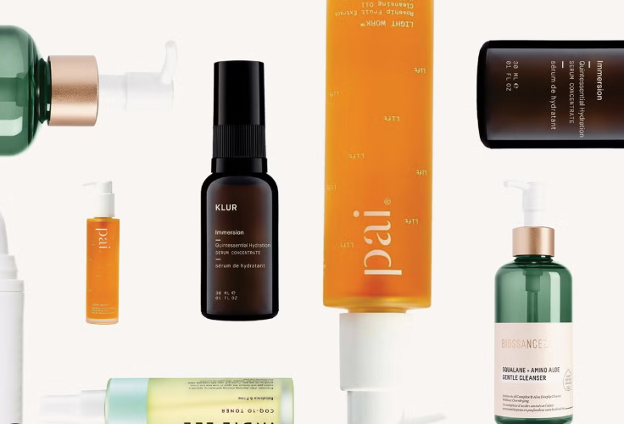
Here’s the shift: features tell, benefits sell.
Feature vs. Benefit Translation
Feature: Contains hyaluronic acid
Benefit: Locks in moisture for 24 hours, giving you plump, bouncy skin that stays hydrated all day
Feature: Formulated with vitamin C
Benefit: Fades dark spots and evens skin tone in 4 weeks, revealing brighter, more radiant skin
Feature: Non-comedogenic formula
Benefit: Won’t clog your pores or cause breakouts—safe for acne-prone skin
Feature: Includes niacinamide
Benefit: Reduces redness and strengthens your skin barrier, calming irritation and sensitivity
See how that works? Every ingredient needs a “so what” attached to it.

Real Brand Examples
Clinique Moisture Surge: “Formulated with aloe bio ferment and hyaluronic acid, it floods skin with instant and long-lasting hydration. 100% instantly show a boost in hydration and glow. Clinically proven.”
They don’t just list ingredients. They tell you what happens (floods skin, instant boost) and back it up with proof (100%, clinically proven).
Neutrogena Hydro Boost: “Formulated with hyaluronic acid, the moisturizer for dry skin absorbs quickly without clogging pores.”
Short, specific, addresses the concern (dry skin), includes the benefit (absorbs quickly), and removes a fear (won’t clog pores).
The Description Structure That Converts
Here’s your roadmap:
- Opening hook (1-2 sentences about transformation)
- What it is (product type and primary function)
- Key benefits (3-4 bullet points, specific results)
- Hero ingredients (2-3 actives with their purpose)
- Sensory experience (texture, scent, how it feels)
- Who it’s for (skin type and concerns)
- How to use (simple, clear instructions)
- Additional attributes (vegan, cruelty-free, etc.)
Closing CTA (next step or inspiration)
Brand Voice: Make It Sound Like You
Your brand isn’t “professional skincare company #47.” You’re something specific. Lean into it.

Luxury Brand Voice
Tone: Sophisticated, elevated, indulgent Word Choice: Curated, refined, exquisite, precious, rare Sentence Style: Longer, flowing sentences with rich descriptions
Example: “A concentrated elixir of rare botanical extracts, meticulously crafted to restore radiance and refine texture. This silk-like serum absorbs effortlessly, delivering visible transformation while enveloping skin in weightless luxury.”
Clinical/Science Brand Voice
Tone: Evidence-based, precise, authoritative Word Choice: Clinically proven, dermatologist-tested, formulated, research-backed Sentence Style: Shorter, direct statements with data
Example: “This 10% niacinamide serum reduces sebum production by 32% in 4 weeks. Dermatologist-tested on sensitive skin. Non-irritating formula supported by clinical trials.”
Natural/Clean Brand Voice
Tone: Transparent, simple, earth-focused Word Choice: Pure, organic, plant-based, sustainably sourced, gentle Sentence Style: Conversational, honest, straightforward
Example: “Five organic ingredients. That’s it. We skip the synthetic fragrances and mystery chemicals. Just plant oils and botanical extracts your skin recognizes and loves.”
Playful/Indie Brand Voice
Tone: Fun, relatable, slightly irreverent Word Choice: Real talk, no BS, your skin but better, glow-getter Sentence Style: Casual, sometimes cheeky, always authentic
Example: “Breakouts don’t stand a chance. This spot treatment works overnight so you can wake up looking like you never had that 3am pizza. No harsh chemicals, no dried-out patches, just clear skin making a comeback.”
Voice Consistency Checklist
- [ ] Does this sound like something our brand would say?
- [ ] Would our target customer use these words?
- [ ] Is the tone consistent across all products?
- [ ] Are we standing out or blending in?
Want Someone Else to Handle the Bundling and Shipping?
Get a Free Quote from eFulfillment Service and see how we can simplify your beauty subscription!
Sensory Language That Creates Connection
Online shoppers can’t touch, smell, or test your product. Your words need to do that work.
Generic descriptions get ignored. Sensory descriptions create an experience before the purchase.

Texture Descriptions
Basic: Gel moisturizer Sensory: Lightweight, cooling gel that melts on contact
Basic: Cream cleanser Sensory: Rich, cushiony cream that transforms into a silky lather
Basic: Face oil Sensory: Silky, fast-absorbing oil that sinks in without greasy residue
Feel Descriptions
Basic: Hydrating Sensory: Drink-of-water hydration that quenches thirsty skin instantly
Basic: Soothing Sensory: Calming relief that cools angry, irritated skin on contact
Basic: Smoothing Sensory: Velvety-smooth finish that blurs imperfections and evens texture
Result Descriptions
Basic: Brightens skin Sensory: Reveals lit-from-within radiance and a healthy, natural glow
Basic: Reduces wrinkles Sensory: Visibly plumps fine lines and smooths crow’s feet in 2 weeks
Basic: Clears acne Sensory: Shrinks angry breakouts overnight while preventing new ones
Scent Descriptions (Use Carefully)
Basic: Lavender scent Sensory: Subtle lavender notes with hints of chamomile—never overpowering
Basic: Unscented Sensory: Fragrance-free formula with a clean, neutral scent (perfect for sensitive noses)
Basic: Fresh scent Sensory: Light, citrus-fresh aroma that wakes up your senses each morning
Before/After Sensory Comparison
Before (Generic): “This moisturizer hydrates dry skin with hyaluronic acid. It has a gel texture and absorbs fast.”
After (Sensory): “Quench thirsty skin with this bounce-back gel moisturizer. The cooling, water-light texture melts on contact, flooding your face with surge hydration that lasts all day. No sticky residue, just plump, dewy skin that feels as soft as it looks.”
SEO Without Sounding Like a Robot
Keywords matter. But stuffing them into every sentence makes your copy unreadable and actually hurts your ranking.
Google’s smarter now. It understands context, synonyms, and natural language. Write for humans first, search engines second.

High-Value Skincare Keywords by Category
Ingredient Keywords:
- Hyaluronic acid (22,200 monthly searches)
- Vitamin C serum (18,100 monthly searches)
- Retinol cream (14,800 monthly searches)
- Niacinamide (12,100 monthly searches)
- Salicylic acid (9,900 monthly searches)
Benefit Keywords:
- Anti-aging (33,100 monthly searches)
- Hydrating (8,100 monthly searches)
- Brightening (6,600 monthly searches)
- Acne treatment (27,100 monthly searches)
Skin Type Keywords:
- Sensitive skin (22,200 monthly searches)
- Dry skin (18,100 monthly searches)
- Oily skin (14,800 monthly searches)
- Combination skin (8,100 monthly searches)
Attribute Keywords:
- Cruelty-free (12,100 monthly searches)
- Vegan skincare (5,400 monthly searches)
- Fragrance-free (4,400 monthly searches)
- Non-comedogenic (3,600 monthly searches)
Long-Tail Keywords That Convert Better
Skip “face cream” (too broad, too competitive). Target specific, high-intent searches:
- “best vitamin C serum for hyperpigmentation” (720 monthly searches)
- “gentle retinol for sensitive skin beginners” (390 monthly searches)
- “oil-free moisturizer for acne-prone combination skin” (480 monthly searches)
- “fragrance-free hyaluronic acid serum pregnancy safe” (210 monthly searches)
These searchers know exactly what they want. Give it to them.
Rethink Your Beauty Brands Strategy!
See How Using a 3PL to start a subscription box could skyrocket your business. Get a Free Quote from eFulfillment Service Today!
Natural Keyword Integration
Keyword Stuffing (Don’t Do This): “Our hyaluronic acid serum is the best hyaluronic acid serum for dry skin. This hyaluronic acid face serum contains hyaluronic acid for hydration.”
Natural Integration (Do This): “This hydrating face serum delivers deep moisture with three molecular weights of hyaluronic acid. Perfect for dry, dehydrated skin that needs intensive hydration without heavy texture.”
See the difference? Same keywords, but readable and conversational.
Where to Place Keywords
High Priority:
- Product title (most valuable for search)
- First 150 characters of description
- H2 headers (if you control the page layout)
- Image alt text
- Meta description
Medium Priority:
- Throughout body copy (naturally)
- Bullet points
- Usage instructions
- FAQ sections
Don’t Force Them Into:
- Brand story sections
- Customer testimonials (let those be authentic)
- Places where it sounds awkward
Collection and Category SEO
If you control your site structure, create keyword-rich categories:
- “Serums for Dry Skin”
- “Acne Treatment Products”
- “Anti-Aging Night Creams”
- “Sensitive Skin Moisturizers”
Write unique descriptions for each collection page. Don’t copy-paste the same intro everywhere.
Usage Instructions That Build Trust
Half your customers don’t know how to use serums correctly. The other half are guessing. Help them succeed.
Clear instructions do three things:
- Reduce returns (no confusion about results)
- Build trust (you’re the expert guiding them)
- Increase repeat purchases (products work better when used right)
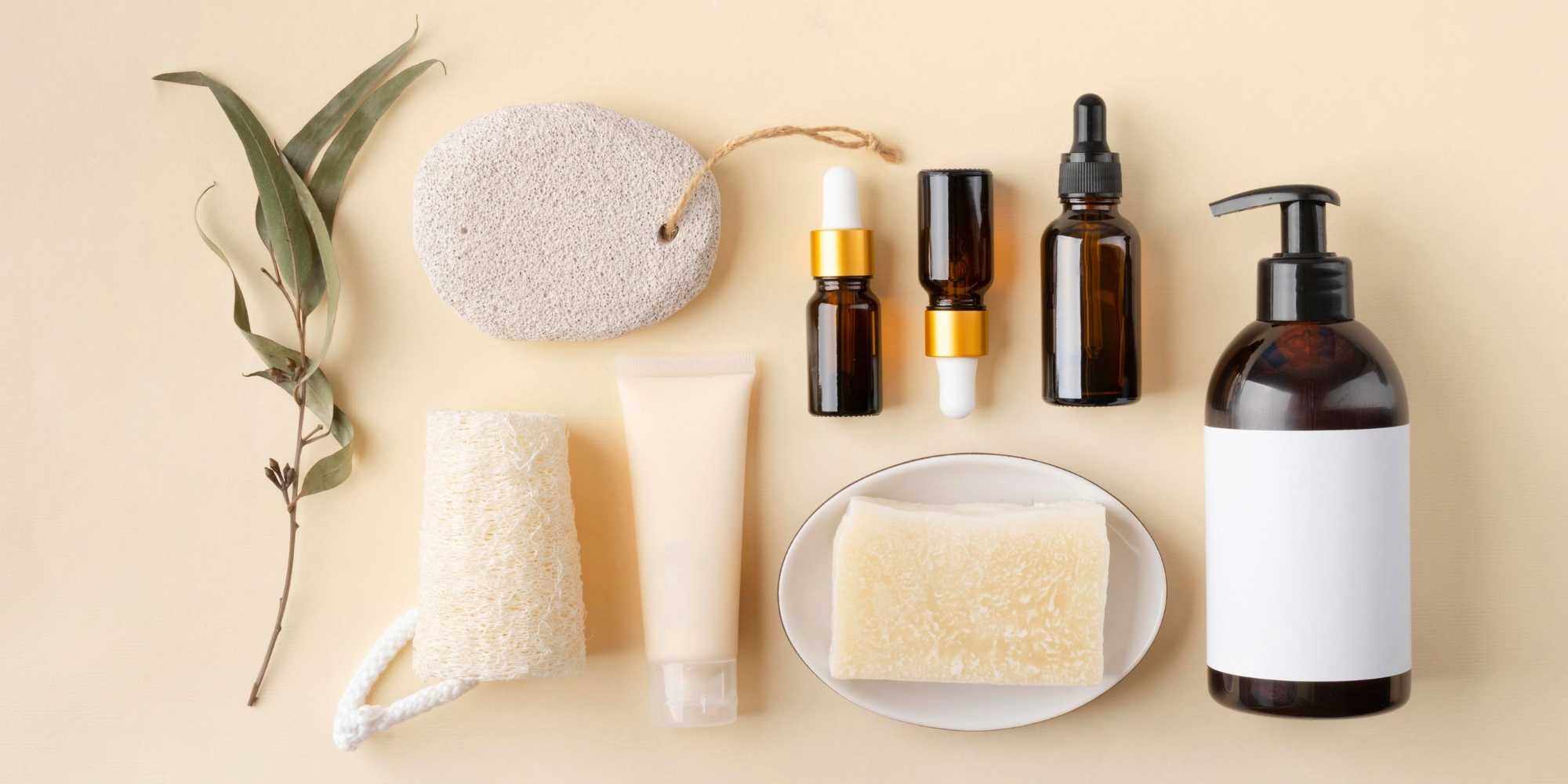
Format That Works
Structure:
- When (morning/night/both)
- How much (amount in familiar terms)
- Where (face, neck, under-eye)
- What order (in your routine)
- How often (daily, 2-3x week, as needed)
Examples by Product Type
Serum: “Morning and night, apply 3-4 drops to clean, damp skin. Pat gently onto face and neck, avoiding eye area. Follow with moisturizer. Use daily for best results.”
Night Cream: “Apply each evening as your final skincare step. Warm a pea-sized amount between your fingers, then press gently into clean skin. Focus on areas prone to dryness or fine lines.”
Spot Treatment: “Use as needed on active breakouts. After cleansing, dab a thin layer directly onto blemishes. Let dry before applying other products. Can be used morning and night.”
Exfoliating Toner: “Use 2-3 times weekly in the evening. After cleansing, sweep a cotton pad soaked with product across face, avoiding eye area. Don’t rinse. Follow with serum and moisturizer. Start with once weekly if you’re new to acids.”
Face Mask: “Apply a thick, even layer to clean, dry skin 1-2 times per week. Leave on for 10-15 minutes. Rinse with lukewarm water and follow with your usual routine. Use more often if needed for extra boost.”
Layering Guidance (If Relevant)
Some products work better in specific orders. Spell it out:
“For best results, layer this serum after cleansing but before heavier creams. The lightweight texture absorbs fast, so you can apply moisturizer and sunscreen right after.”
Or:
“Use this oil as your final step at night. It seals in all the good stuff from your serums and creams underneath.”
First-Time User Tips
New to actives? Say so:
“If you’re new to retinol, start using 2-3 nights per week. Gradually increase to nightly use as your skin builds tolerance. Some mild tingling is normal initially.”
Call-to-Action That Closes the Deal
You’ve hooked them. You’ve educated them. Now tell them what to do next.
Most descriptions just… stop. No invitation. No next step. Don’t leave money on the table.

Soft CTAs (Subtle Invitations)
“Discover the difference 24-hour hydration makes—add to your routine today.”
“Experience visibly brighter skin in just 4 weeks.”
“Your clearest skin starts here.”
“Make this your new morning ritual.”
Benefit-Focused CTAs
“Say goodbye to dry, flaky skin—quench your thirst.”
“See visible results in 2 weeks or your money back.”
“Join thousands who’ve transformed their skin.”
Collection CTAs (Cross-Sell)
“Pair with our Brightening Toner for maximum glow.”
“Complete your routine with our full Hydration Collection.”
“Love this? Try our Night Cream next.”
Urgency CTAs (Use Sparingly)
“Limited batch—restock alert when you purchase.”
“Bestseller for 3 years running—discover why.”
“Customer favorite with 4.8-star rating.”
Wrong Way to End
Too pushy: “BUY NOW! DON’T MISS OUT! LIMITED TIME OFFER!!!”
Too bland: “Available for purchase on our website.”
No CTA at all: [Description just ends]
Right Way to End
Confident and inviting: “Add this to your cart and see the difference hydrated skin makes.”
Story-driven: “This is the serum that changed our founder’s skin. Now it’s your turn.”
Results-focused: “Transform your skin in 30 days or less—satisfaction guaranteed.”
Want to Skyrocket Your Skincare eCommerce Business?
Using a 3PL can free up your time so you can focus on what matters, selling great products!
Ready-to-Use Templates (Copy and Customize)
Stop staring at a blank page. Plug your details into these templates and edit to match your voice.

Template 1: Benefit-First Description (Best for Problem Solvers)
[Hook about the transformation they want]
This [texture] [product type] targets [primary concern] with [key ingredient]. [What makes it different from competitors].
What It Does:
- [Benefit 1 with specific result]
- [Benefit 2 with specific result]
- [Benefit 3 with specific result]
Key Ingredients:
- [Ingredient 1]: [What it does in plain language]
- [Ingredient 2]: [What it does in plain language]
How to Use:
[Simple, clear instructions with when/how much/where]
Perfect For: [Skin type and specific concerns]
[Closing CTA]
Example (Filled In):
Fight stubborn breakouts without the dry, tight feeling.
This lightweight gel treatment targets acne at the source with 2% salicylic acid. The non-stripping formula clears current breakouts while preventing new ones from forming.
What It Does: • Shrinks active pimples in 24-48 hours • Unclogs pores and prevents future breakouts • Reduces redness and inflammation without irritation
Key Ingredients: • Salicylic Acid 2%: Penetrates pores to clear out buildup and dead skin • Niacinamide: Calms redness and strengthens your skin barrier
How to Use: Apply a thin layer to clean skin morning and night, or use as a spot treatment on active breakouts. Follow with oil-free moisturizer.
Perfect For: Oily, acne-prone, and combination skin dealing with hormonal breakouts or congested pores.
Clear skin is within reach—add this to your routine today.
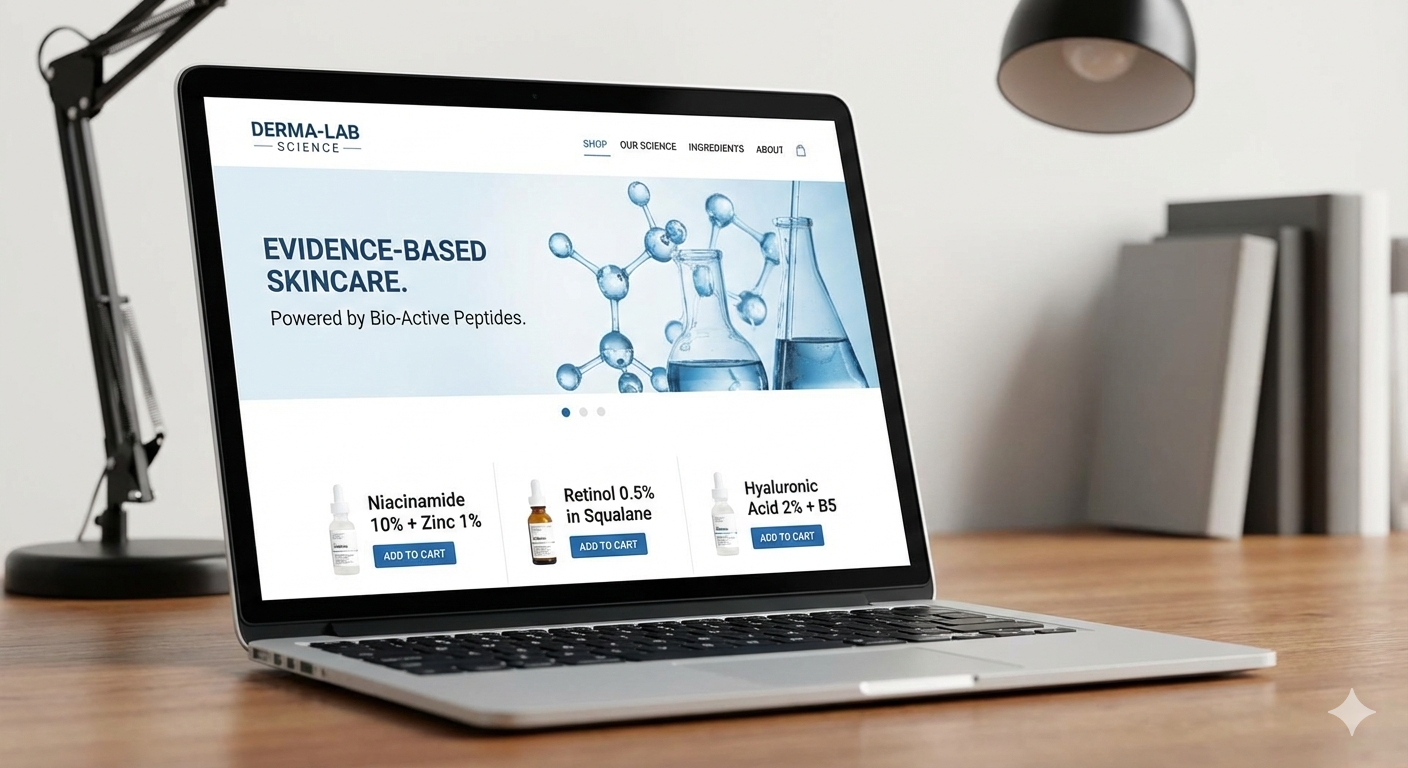
Template 2: Science-Backed Description (Best for Clinical Brands)
[Clinical claim or study result]
This [product type] contains [concentration]% [active ingredient], clinically proven to [primary benefit] in [timeframe].
Proven Results:
- [Percentage]% saw [result] in [timeframe]
- [Percentage]% experienced [result]
- [Clinical or dermatologist testing statement]
Formula Highlights:
[Ingredient 1] ([percentage if relevant]): [Mechanism of action]
[Ingredient 2]: [Mechanism of action]
Usage:
[When to use, amount, frequency]
Suitable for: [Skin types based on testing]
[Closing CTA with trust element]
Example (Filled In):
Clinically proven to reduce fine lines by 31% in 12 weeks.
This anti-aging night serum contains 0.5% retinol, clinically proven to improve skin texture and reduce visible signs of aging in 12 weeks.
Proven Results: • 84% saw smoother skin texture in 4 weeks • 76% experienced fewer visible fine lines in 8 weeks • Dermatologist-tested and safe for sensitive skin
Formula Highlights: Retinol 0.5%: Stimulates collagen production and accelerates cell turnover Hyaluronic Acid: Provides hydration to minimize irritation from retinol Squalane: Nourishes and restores skin barrier function
Usage: Apply 2-3 drops to clean, dry skin each evening. Start with 2-3 nights per week, gradually increasing to nightly use. Always follow with SPF during the day.
Suitable for: All skin types seeking visible anti-aging results with minimal irritation.
Backed by science, loved by dermatologists. Try risk-free for 30 days.
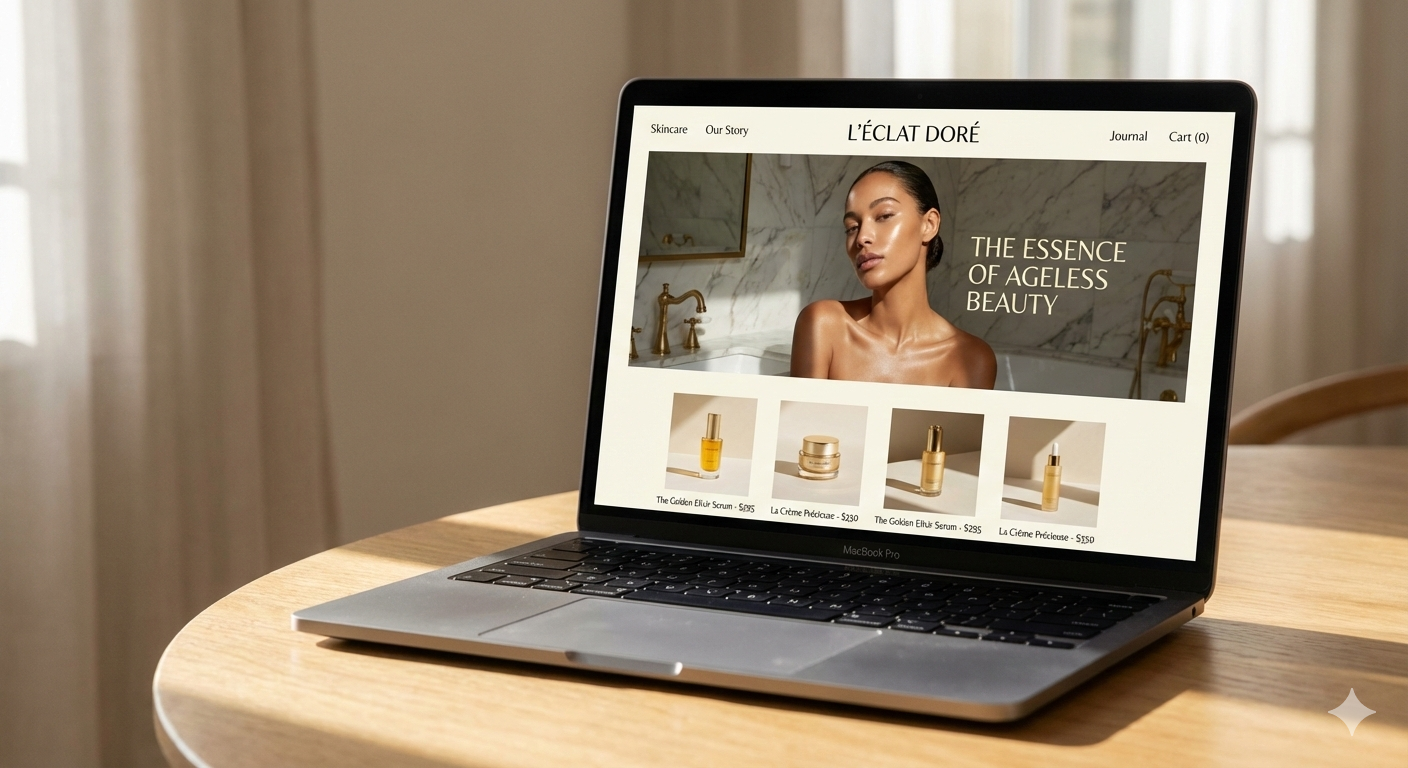
Template 3: Sensory/Luxury Description (Best for Premium Brands)
[Evocative opening about the experience]
[Product name] is a [luxurious descriptor] [product type] that [primary benefit through sensory language]. [Unique formulation or sourcing story].
The Experience:
[Detailed sensory description: texture, scent, feel, result]
Precious Ingredients:
[Ingredient 1]: [Benefit in elevated language]
[Ingredient 2]: [Benefit in elevated language]
Ritual:
[Usage instructions written as a ritual or ceremony]
[Closing with brand philosophy or invitation]
Awaken to visibly transformed skin.
The Overnight Recovery Serum is a concentrated elixir that works while you sleep, revealing smoother, more luminous skin by morning. Crafted with rare Kakadu plum—the world’s richest source of vitamin C—and sustainably harvested sea kelp.
The Experience: A few drops of this silk-like serum glide effortlessly across skin, absorbing instantly without any heaviness. The subtle, naturally derived scent calms the senses while the formula works its magic overnight. Wake to skin that feels soft as cashmere and looks radiant.
Precious Ingredients: Kakadu Plum Extract: Delivers powerful antioxidants and brightens dull, tired skin Blue Sea Kelp: Deeply nourishes and firms for visibly lifted contours
Ritual: Each evening, after cleansing, warm 4-5 drops between your palms. Press gently into skin, starting at your neck and moving upward. Breathe in the calming aroma. Let the night work its transformation.
This is more than skincare. This is your nightly reset.

Quick Skincare Title Templates
Ingredient-Focused: [Key Ingredient] [Product Type] for [Skin Concern] – [Size/Strength]
Examples:
- Retinol 0.3% Night Serum for Fine Lines and Wrinkles – 1oz
- Hyaluronic Acid Moisturizer for Dehydrated Dry Skin – 50ml
Benefit-Focused: [Primary Benefit] [Product Type] with [Key Ingredient] – [Skin Type]
Examples:
- Brightening Vitamin C Serum with Ferulic Acid – All Skin Types
- Pore-Minimizing Toner with Niacinamide – Oily Combination Skin
Problem-Solution: [Product Type] for [Specific Concern] – [Solution/Ingredient] Formula
Examples:
- Spot Treatment for Hormonal Acne – Tea Tree Sulfur Formula
- Daily Moisturizer for Eczema-Prone Skin – Colloidal Oatmeal
Rethink Your Skincare Strategy!
See How Using a 3PL for Your beauty fulfillment needs could simplify your business. Get a Free Quote from eFulfillment Service Today!
Mistakes That Kill Conversions
You can nail 90% of your copy and still lose sales if you make these errors.

Skincare Title Mistakes
- Too Generic
❌ “Face Moisturizer”
✅ “Hydrating Gel Moisturizer with Ceramides for Dry Sensitive Skin”
Why it matters: Generic titles don’t rank in search and don’t tell customers anything useful.
- Keyword Stuffing
❌ “Serum Face Serum Anti-Aging Serum Vitamin Serum Retinol Serum Night Serum”
✅ “Anti-Aging Retinol Night Serum 0.5% for Fine Lines”
Why it matters: Amazon will flag this. Google will ignore it. Humans will bounce.
- Wasting Space on Filler
❌ “Our Amazing Revolutionary New Advanced Technology Formula Serum Product”
✅ “Clinical-Strength Vitamin C Serum 15% with Ferulic Acid”
Why it matters: Superlatives aren’t searchable. Specifics are.
- Ignoring Mobile Display
❌ “Super Ultimate Best Premium Quality Anti-Aging Retinol Serum Treatment for Mature Skin with Hyaluronic Acid and Peptides 30ml Bottle” (123 characters, gets cut off)
✅ “Anti-Aging Retinol Serum 0.5% with Hyaluronic Acid for Mature Skin” (68 characters, displays fully)
Why it matters: Most shoppers browse on phones. If they can’t read it, they won’t click it.
- ALL CAPS or !!! Excessive !!! Punctuation
❌ “BEST SERUM EVER!!! Amazing Results!!! BUY NOW!!!”
✅ “Hydrating Face Serum with Hyaluronic Acid – Plump Dewy Skin”
Why it matters: Looks spammy. Platforms suppress listings. Customers distrust it.
Skincare Description Mistakes
- Making Medical Claims
❌ “Cures acne permanently” or “Eliminates all wrinkles” or “Treats rosacea”
✅ “Helps reduce breakouts” or “Visibly reduces fine lines” or “Soothes redness”
Why it matters: FDA classifies these as drug claims. You could face legal issues or platform bans.
- No Differentiation
❌ “This moisturizer hydrates skin. It contains good ingredients. It’s great for all skin types.”
✅ “Unlike heavy creams that sit on top of skin, this gel-cream absorbs in seconds while providing 24-hour hydration for combination skin.”
Why it matters: If you sound like everyone else, price becomes the only differentiator.
- Ingredient Lists Without Context
❌ “Contains hyaluronic acid, niacinamide, ceramides, peptides, vitamin E, and squalane.”
✅ “Hyaluronic acid floods skin with moisture while niacinamide calms redness and strengthens your barrier. Ceramides lock it all in for 24-hour hydration.”
Why it matters: Customers want to know what ingredients DO, not what they ARE.
- Wall of Text (No Formatting)
❌ One giant paragraph with 200+ words
✅ Short paragraphs (2-4 sentences), bullet points for benefits, clear section breaks
Why it matters: Nobody reads walls of text. They scan. Make it scannable.
- No Usage Instructions
❌ [Description ends after benefits]
✅ “Apply 2-3 drops to clean, damp skin each morning. Follow with moisturizer and SPF.”
Why it matters: Confused customers don’t buy. Clear instructions remove the barrier.
- Ignoring Mobile Readers
❌ Long sentences with complex clauses that require scrolling and re-reading
✅ Short sentences. Clear thoughts. Easy scanning.
Why it matters: 70%+ of skincare shoppers browse on phones.
- Same Description Everywhere
❌ Copy-pasted Amazon description on your Shopify store on Walmart on Etsy
✅ Customized for each platform’s character limits and audience
Why it matters: Google penalizes duplicate content. Different platforms have different shoppers.
- No Sensory Details
❌ “This is a gel moisturizer”
✅ “This cooling, lightweight gel melts on contact and absorbs in seconds”
Why it matters: Sensory language creates emotional connection. Basic descriptions don’t.
Legal Compliance: What You Can and Can’t Say
Skincare is regulated by the FDA. Get this wrong, and you’re risking your business.

What You CANNOT Say (These Are Drug Claims)
These words trigger FDA scrutiny:
Banned Verbs:
- Cures
- Treats
- Prevents
- Eliminates
- Heals
- Fixes
- Reverses (when referring to medical conditions)
Banned Claims:
- “Cures acne”
- “Treats rosacea”
- “Prevents aging”
- “Eliminates wrinkles”
- “Heals eczema”
- “Reverses sun damage”
Why? If you claim your product treats, prevents, or cures a disease or condition, the FDA may classify it as a drug. Drugs need pre-market approval, clinical trials, and tons of paperwork. Your moisturizer isn’t going through that.
What You CAN Say (These Are Cosmetic Claims)
Use softening language that describes appearance, not medical treatment:
Safe Verbs:
- Reduces the appearance of
- Helps minimize
- Visibly improves
- May help with
- Supports
- Soothes
- Calms
Safe Claims:
- “Reduces the appearance of fine lines”
- “Helps minimize redness”
- “May help with breakouts”
- “Supports skin’s natural moisture barrier”
- “Soothes irritated skin”
- “Visibly brightens skin tone”
See the difference? You’re describing what it does to skin’s appearance, not treating a medical condition.
Before/After Claim Examples
Wrong: “Cures acne in 2 weeks”
Right: “Helps reduce breakouts. In consumer studies, 78% saw fewer blemishes in 2 weeks.”
Rethink Your Beauty Brands Strategy!
See How Using a 3PL to start a subscription box could skyrocket your business. Get a Free Quote from eFulfillment Service Today!
What About “FDA Approved”?
Here’s the thing: The FDA doesn’t approve cosmetics before they hit the market (except color additives). So saying “FDA approved” is misleading and false.
You CAN say:
- “Made in an FDA-registered facility”
- “Formulated in compliance with FDA guidelines”
Required Warnings and Disclaimers
Some products need specific warnings:
Sunscreen: SPF claims require FDA approval as OTC drugs
Pregnancy/Nursing: If your product contains retinol, consider adding “Consult your doctor if pregnant or nursing”
Patch Test: “Patch test recommended” for products with active ingredients
External Use: “For external use only” is standard practice
When in Doubt
- Don’t make claims you can’t prove
- Keep records of any testing or studies
- Consult with a cosmetic attorney if you’re unsure
- Review FDA’s cosmetics guidance (it’s free online)
Final Checklist: Before You Publish
Run through this before any title or description goes live:
Title Checklist:
- [ ] Under platform’s character limit?
- [ ] Keywords front-loaded?
- [ ] Specific (not generic)?
- [ ] No banned special characters?
- [ ] No word repetition (if Amazon)?
- [ ] Title case formatting?
- [ ] Describes product accurately?
- [ ] Sounds like your brand?
Description Checklist:
- [ ] Opens with a hook?
- [ ] Benefits clearly stated?
- [ ] Ingredients explained in plain language?
- [ ] Sensory details included?
- [ ] Usage instructions clear?
- [ ] No medical/drug claims?
- [ ] Keywords included naturally?
- [ ] Formatted for mobile (short paragraphs, bullets)?
- [ ] Ends with a CTA?
- [ ] Proofread for typos?
Legal Checklist:
- [ ] No claims of curing/treating/preventing disease?
- [ ] All stats backed up by studies?
- [ ] Ingredient percentages accurate?
- [ ] Required warnings included (if applicable)?
- [ ] Nothing copied from competitor sites?
SEO Checklist:
- [ ] Primary keyword in title?
- [ ] Primary keyword in first 150 characters?
- [ ] 2-3 related keywords throughout?
- [ ] Keywords sound natural?
- [ ] Long-tail variations included?
- [ ] Image alt text optimized (if you control page)?
Summary
You’ve got the formulas. You’ve got the templates. You’ve got the rules.
Now actually use them.
Start with your top 5 products. Rewrite one title and description per day. Test them for 2 weeks. Check your metrics. Adjust.
Don’t aim for perfection on the first draft. Aim for better than what you had yesterday.
Remember:
- Your title has 2 seconds
- Your description has 10 more
- Benefits sell better than ingredients
- Sensory language creates connection
- Clear instructions build trust
- Legal compliance protects your business
- Testing makes everything better
Your products are good. Make sure your words are too.
Sources
- My Amazon Guy – 2025 Amazon Product Title Requirements
- Carbon6 – New Amazon Product Title Requirements for 2025
- Search Engine Land – Amazon’s 2025 Title Policy Update
- Amazon Seller Central – New Product Title Requirements (January 21, 2025)
- Amalytix – Amazon Product Title Guidelines 2025:
- Zima Media – Skincare SEO Best Practices
- HawkSEM – Skincare SEO Essentials 2024
- Result First – 12 SEO Tips for Beauty Products 2025
- Selfnamed – Writing Skincare Product Descriptions That Sell
- Shopify – Skin Care Marketing Strategies 2025




0 Comments